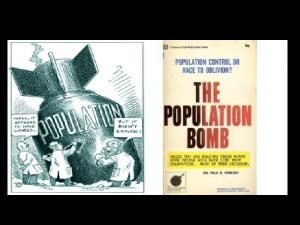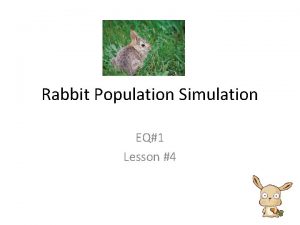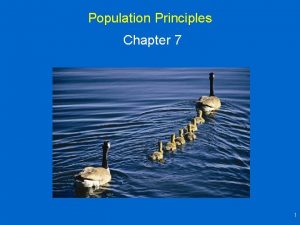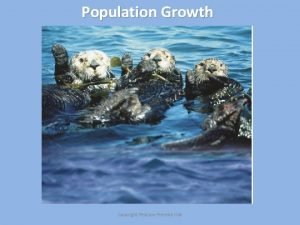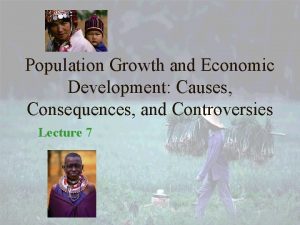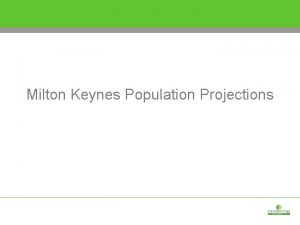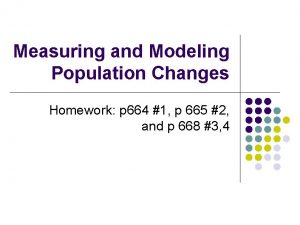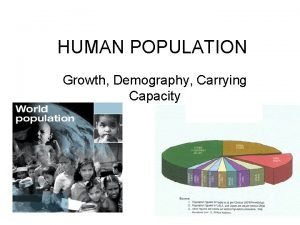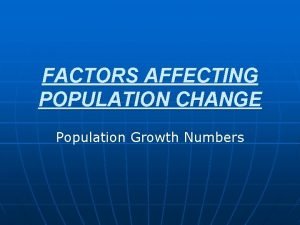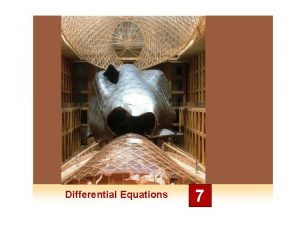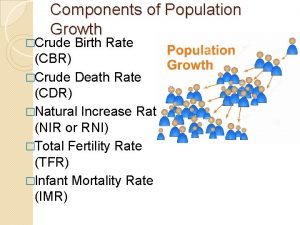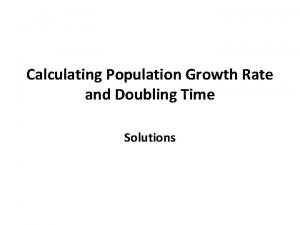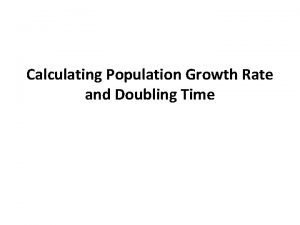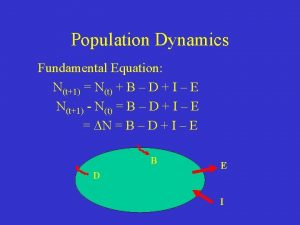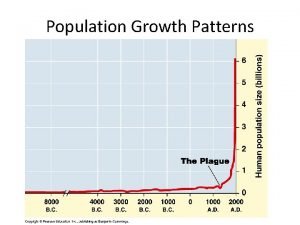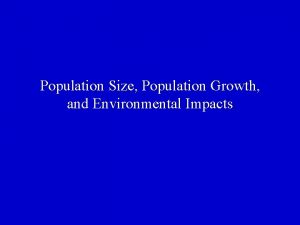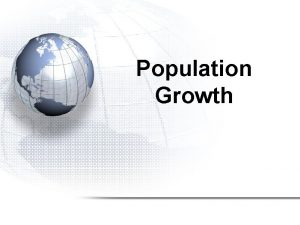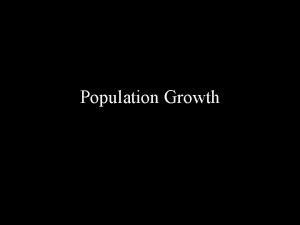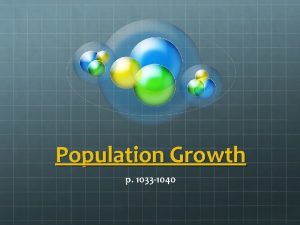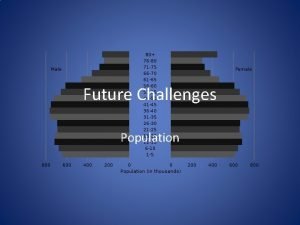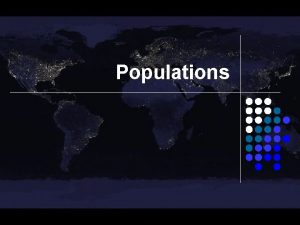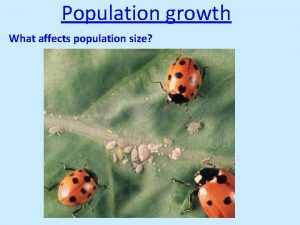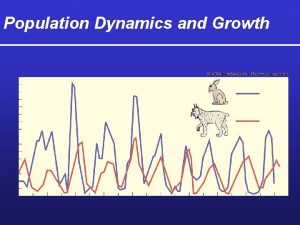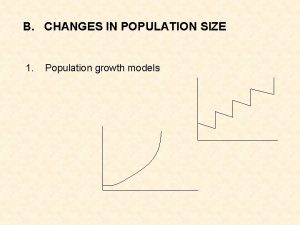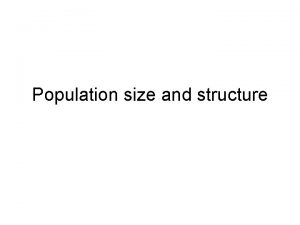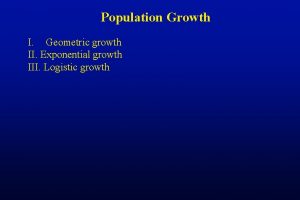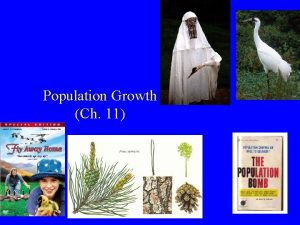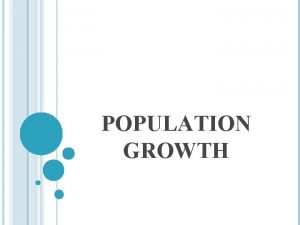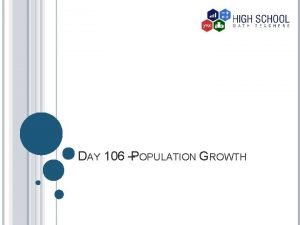POPULATION GROWTH I Predicting Future Population Size Nt1





























- Slides: 29

POPULATION GROWTH

I) Predicting Future Population Size Nt+1 = f (Nt, B, D, I, E)

II) Estimating Rates of Population Change d. N = f (B, D, I, E) dt

I) STEADILY INCREASING POPULATIONS Geometric Growth Exponential Growth 1) Pulsed Reproduction 1) Continuous Reproduction 2) Non-Overlapping 2) Overlapping Generations 3) Per Capita Rate of Increase (r) 3) Geometric Rate of Increase ( λ) Figs. 11. 3, 11. 6 in Molles 2008

UNLIMITED POPULATION GROWTH A: (Geometric Growth) • Pulsed Reproduction • Non-Overlapping Generations Fig. 11. 3 in Molles 2013

UNLIMITED POPULATION GROWTH A: (Geometric Rate of Increase ( ) : Ratio of Successive Population Size) N 7 ___ = N 6 N 8 ___ = N 7 Fig. 11. 3 in Molles 2013

Geometric Growth: Calculation of Geometric Rate of Increase (λ) λ= Nt+1 _______ Nt

Calculating Geometric Rate of Increase (λ) N 0 = 996 8 N 1 = 2, 408 Phlox drummondii λ=

Geometric Growth: Projecting Population Numbers N 0 = 996 N 1 = 2, 408 λ = 2. 42 8 Phlox drummondii N 2 = N 3 = N 4 = N 10 =

STEADILY INCREASING POPULATIONS (Geometric Growth: Rate of Population Growth) Nt = N o Fig. 11. 3 in Molles 2008 t λ

Problem A: The initial population of an annual plant is 500. If, after one round of seed production, the population increases to 1, 200 plants, what is the value of λ?

Problem B. For the plant population described in Problem A, if the initial population is 500, how large will be population be after six consecutive rounds of seed production?

Problem C: For the plant population described above, if the initial population is 500 plants, after how many generations will the population double?

UNLIMITED POPULATION GROWTH B: (Exponential Growth) • Continuous Reproduction • Overlapping Generations Fig. 11. 7 in Molles 2008

UNLIMITED POPULATION GROWTH B Exponential Growth (Rate of Population Growth) d. N d. T Rate = d. T d. N ___ d. T

Graph of d. N/d. T versus N (Exponential Growth) 1 d. N ___ d. T rise run rise 0. 5 run rise rmax = run (= intrinsic rate of increase) rise run N

EXPONENTIAL POPULATION GROWTH: Rate of Population Growth Population Size d. N __ = r N d. T max Intrinsic Rate of Increase Rate of Population Growth • rmax = maximum value of r

EXPONENTIAL POPULATION GROWTH: Predicting Population Size d. N __ = r N d. T max Nt = No e (e = 2. 718) r max t

Problem D. Suppose that the Silver City population of Eurasian Collared Doves, with initial population of 22 birds, is increasing exponentially with rmax =. 2 individuals per individual per year. How large will the population be after 10 years?

Problem E. How many years will it take the Eurasian Collared Dove population described above (initial population size: 22 birds) to reach 1000 birds? ------------------------------------------------------ LN(AB) = B LN(A) LN(e) = 1 LN(AB) = LN(A) + LN(B) LN(A/B) = LN(A) – LN(B)

Problem F. “Doubling Time” is the time it takes an increasing population to double. What is the doubling time for the Eurasian Collared Dove population described above?

Problem E. Refer to the Eurasian Collared Dove population described earlier. How fast is the population increasing when the population is 100 birds? How fast is the population increasing once the population reaches 500 birds?

Problem F. How large is the Eurasian Collared Dove population when the rate of population change (d. N/dt) is 5 birds per year? When the rate of population change (d. N/dt) is 20 birds per year?

LOGISTIC GROWTH: Rate of Population Change Fig. 11 in Molles 2006

LOGISTIC GROWTH: Carrying Capacity 82 N Sigmoid Curve: T

LOGISTIC GROWTH: Rate of Population Change d. N ___ d. T (Logistic Population Growth) Figs. 11 in Molles 2006.

Graph of d. N/d. T versus N (Logistic Growth) rise d. N ___ d. T rise run N

LOGISTIC GROWTH: Rate of Population Change d. N ____ = d. T r max N (1 - N K ) “Brake” Term

LOGISTIC GROWTH: Predicting Population Size
 Future continuous see
Future continuous see Future perfect simple continuous
Future perfect simple continuous Relative growth rate equation
Relative growth rate equation Monocot vs eudicot
Monocot vs eudicot Carothers equation
Carothers equation Primary growth and secondary growth in plants
Primary growth and secondary growth in plants Vascular ray
Vascular ray Geometric growth graph
Geometric growth graph Neoclassical growth theory vs. endogenous growth theory
Neoclassical growth theory vs. endogenous growth theory Organic vs inorganic growth
Organic vs inorganic growth Aviva diversified assets fund 4
Aviva diversified assets fund 4 Rule of 70
Rule of 70 What are the two types of population growth
What are the two types of population growth Modeling population growth rabbits answer key
Modeling population growth rabbits answer key Survivorship curve
Survivorship curve Copyright
Copyright Why population growth is good
Why population growth is good Ideal population growth curve
Ideal population growth curve Logistic growth ecology definition
Logistic growth ecology definition Milton keynes population 2021
Milton keynes population 2021 Types of population growth
Types of population growth Tragedy of the commons
Tragedy of the commons Rule of 70 in population growth
Rule of 70 in population growth Population growth factors
Population growth factors Logistic differential equation
Logistic differential equation How to calculate annual population growth rate
How to calculate annual population growth rate Military base population pyramid
Military base population pyramid Clumped dispersion
Clumped dispersion How to calculate population growth rate
How to calculate population growth rate Calculating population growth
Calculating population growth












